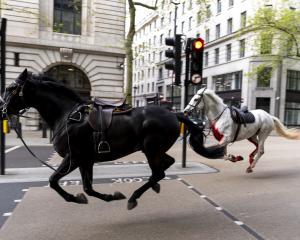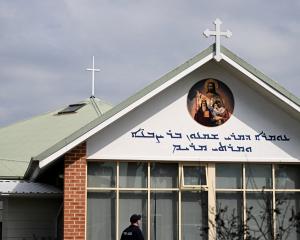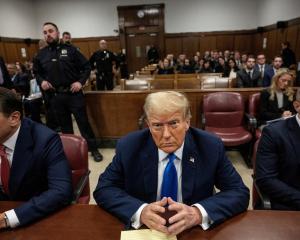The deadly encounter in July on Staten Island, New York City's smallest borough, was captured on video, which quickly spread over the Internet and fueled debate about how US police use force, particularly against minorities.
Last week, a grand jury in Missouri decided not to indict a white police officer in another racially charged killing of a black man. The decision in that case sparked a spasm of violence in Ferguson, Missouri, where 18-year-old Michael Brown was killed, with businesses burned down and looted.
Eric Garner, a 43-year-old father of six, died in on July 17 after police officers tackled him and put him in a chokehold. The city's medical examiner ruled the death a homicide.
New York City police prepared on Wednesday for protests that could potentially paralyze major roads and tunnels in the city. The grand jury announcement prompted calls for protests at Grand Central Station and Union Square on Wednesday, while New York Mayor Bill de Blasio called for people to react peacefully.
The district attorney for Staten Island, Daniel Donovan, announced the grand jury's decision not to indict the white police officer, Daniel Pantaleo, who placed Garner in a chokehold.
Staten Island community activist and businessman Bobby Digi was among people who reacted quickly after word of the decision came out.
"I can't say that I'm surprised, but I kind of had my fingers crossed, you know," he said. "It's just really, really sad." Digi said he knew Garner and had spent time with his mother on Tuesday night. "It was nice just to hug her and give her that spirit that we feel your pain, we share your pain."
But while the decision surprised many given the video footage, Aaron Mysliwiec, president of the New York State Association of Criminal Defense Lawyers, said it was not unusual.
"There are a lot of cases where police officers don't get indicted for what looks like extreme situations," he said. "Many jurors and judges tend to believe police officers more than your average witness."
In ruling Garner's death a homicide, the city medical examiner said police officers killed him by compressing his neck and chest. His health problems, including asthma and obesity, were contributing factors, the medical examiner said.
Donovan said he applied for a court order to authorize the release of "specific information in connection with this grand jury investigation." He noted in his statement that under New York law he is not permitted to disclose any details of a grand jury proceeding.
The grand jury, like all in New York, had 23 members. At least 12 grand jurors must agree to bring an indictment. Donovan said that all 23 grand jurors attended every one of the sessions in the Garner case, which began on Sept. 29 and ended on Wednesday.
TEST FOR DE BLASIO
The Patrolmen's Benevolent Association, the municipal police union, has maintained that the officers acted properly and within the scope of the law. The New York Police Department's patrol manual bans chokeholds, calling them dangerous.
De Blasio was to hold a news conference beginning at 4:45 p.m.; he canceled his appearance at the Rockefeller Center Christmas tree lighting, The New York Times reported. The grand jury decision poses the biggest challenge for De Blasio since coming into office in January.
The National Action Network, the civil rights group founded by the Rev. Al Sharpton, said that Garner's mother, Gwen Carr, and his widow, Esaw Garner, will speak to the media at 7:30 p.m. Wednesday at the group's headquarters in Harlem.
In the aftermath of the Garner incident, New York Police Commissioner Bill Bratton said every officer in the police department, the nation's largest police force, would have to undergo new training. He said it would emphasize tactics that could calm an encounter, something the police department has described as "verbal judo."
Civil rights activists have complained that requests for the police to provide training material on use of force had gone unanswered. The New York Civil Liberties Union has criticized the department's Patrol Guide, describing its section on the use of force as "skeletal," offering "precious little affirmative guidance" to police.
The police department does not release data on non-lethal uses of force, but an indication of the diverse array of acceptable methods can be seen in the complaints received by the city's Civilian Complaint Review Board (CCRB).
Between 2009 and 2013, the board confirmed nearly 5,400 public allegations of police officers using physical force.
Among the methods of force that police can use are clubbing with a nightstick, radio, gun, flashlight or other blunt object; hitting someone with a vehicle; dragging, pulling, shoving, throwing, beating, punching, kicking, slapping, fighting or biting a civilian.
In 5,197 of the total instances from 2009 to 2013, the board ruled that the police had used the force described by the complainant but had done so lawfully. In only 189 instances, including all nine substantiated instances of a chokehold, the only off-limits maneuver, did the board deem the use of force excessive.
The CCRB does not usually publish accounts of the circumstances in each instance of force.












